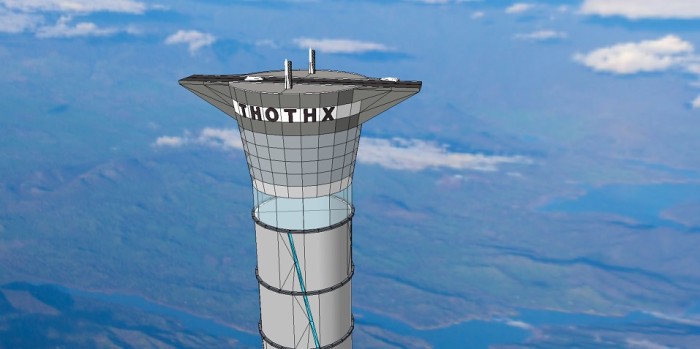Canadian company patented space elevator

Space and defense company Thoth Technology received US patent No. 9085897 for a space elevator.
The idea of a space elevator is very popular in the scientific community. Scientists and engineers have long been discussing which materials to use in construction, and which construction is preferable. By the way, the Space Elevator Conference 2015 in Seattle will begin in a week. They will also raise these issues.
A space elevator has several advantages over conventional rockets. It will allow to lift multi-ton loads and tourists into orbit. No overloads, acoustic vibrations, tons of explosive fuel under the seat and other risks associated with missile launch.
And now the patent for space elevators turned out to be with the Canadian company Thoth Technology. According to the description, the elevator lifts loads to a height of 20 kilometers. Thoth Technology engineers say the elevator will save 30% fuel compared to a rocket.


The concept provides for the construction of a tower that maintains rigidity thanks to compressed gas. It should “deliver equipment, personnel, and other objects to a platform above the surface of the Earth for scientific research, communications, and tourism.” At the top of the tower will be a launch pad for launching spacecraft.

The patent also states that the design scales to 200 kilometers. Fast Company Magazine Adds“But the patent does not say that your bank account is scalable to a billion dollars - technically this is true, but the implementation can be difficult.”
The patent does state that the tower will provide direct access to low Earth orbit above 200 km.
The author of Information Week magazine believes that humanity already has technology for building a space elevator. “Modular tubes of Kevlar and polyethylene composites filled with helium are suitable for this purpose. Such tubes are much lighter and easier to handle than modern building materials, and helium helps maintain structure. ”
“From the top of the tower, space planes will launch in one-stage orbit, returning to the same platform for refueling and re-takeoff,” said Dr. Brendan Quine, inventor and professor at the Lassonde Engineering School at York University.
